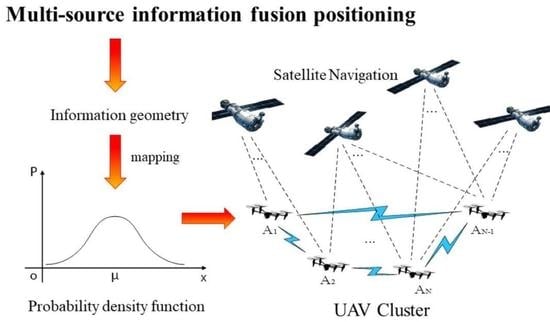Multisource Fusion UAV Cluster Cooperative Positioning Using Information Geometry
Abstract
1. Introduction
- The information from various navigation sources carried by the UAV cluster is creatively transformed into an information probability model, the time and frequency parameters of various types of navigation information of the UAV cluster are unified, and a simulation scenario is established to verify the model.
- A multisource fusion UAV cluster localization method based on information geometry is proposed. The method utilizes the correlation between the information probability of the UAV navigation sources and the positioning accuracy, calculates the accuracy probability function of the navigation source information, establishes the probability geometric manifold of the navigation source information, and fuses multiple probability density functions to obtain the positioning result.
- Simulation tests of the proposed UCP-IG model in ideal scenarios, sudden loss of navigation information scenarios, and random motion scenarios are carried out. The test results show that the UCP-IG method proposed in this paper can effectively improve the stability of UAV clusters. In the case of a loss of human–machine navigation information, errors can also be effectively suppressed.
2. Related Work
3. System Model
4. Multisource Fusion Cooperative Positioning Algorithm
| Algorithm 1: UCP-IG Fusion Algorithm |
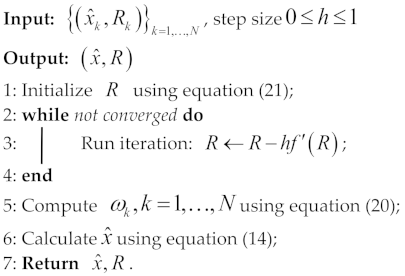 |
5. Simulation Results and Analysis
5.1. Experimental Environment
5.2. Comprehensive Scenario
5.3. Experimental Random Scenario
5.4. Experimental Occlusion Scenario
6. Conclusions
Author Contributions
Funding
Institutional Review Board Statement
Informed Consent Statement
Conflicts of Interest
References
- Estrada, M.A.R.; Ndoma, A. The uses of unmanned aerial vehicles—UAV’s-(or drones) in social logistic: Natural disasters response and humanitarian relief aid. Procedia Comput. Sci. 2019, 149, 375–383. [Google Scholar] [CrossRef]
- Song, B.D.; Park, K.; Kim, J. Persistent UAV delivery logistics: MILP formulation and efficient heuristic. Comput. Ind. Eng. 2018, 120, 418–428. [Google Scholar] [CrossRef]
- Mo, Y.; Zhang, Z.; Meng, W.; Ma, L.; Wang, Y. A Spatial Division Clustering Method and Low Dimensional Feature Extraction Technique Based Indoor Positioning System. Sensors 2014, 14, 1850–1876. [Google Scholar] [CrossRef]
- Sivakumar, A. UAV swarm coordination and control for establishing wireless. In Proceedings of the 9th International Conference on Autonomous Agents and Multiagent Systems (AAMAS), Toronto, ON, Canada, 10–14 May 2010; pp. 1157–1164. [Google Scholar]
- Gualda, D.; Ureña, J.; García, J.C.; Pérez, M.C.; Díaz, E. Study of cooperative position estimations of mobile robots. In Proceedings of the 2017 International Conference on Indoor Positioning and Indoor Navigation (IPIN), Sapporo, Japan, 18–21 September 2017; pp. 1–7. [Google Scholar] [CrossRef]
- Lin, Q.; Wang, X.; Wang, Y. Cooperative Formation and Obstacle Avoidance Algorithm for Multi-UAV System in 3D Environment. In Proceedings of the 2018 37th Chinese Control Conference (CCC), Wuhan, China, 25–27 July 2018; pp. 6943–6948. [Google Scholar] [CrossRef]
- Zhou, Y.; Wan, J.; Li, Z.; Song, Z. GPS/INS integrated navigation with BP neural network and Kalman filter. In Proceedings of the 2017 IEEE International Conference on Robotics and Biomimetics (ROBIO), Macau, China, 5–8 December 2017; pp. 2515–2520. [Google Scholar] [CrossRef]
- Pulford, G.W. Taxonomy of Multiple Target Tracking Methods. IEE Proc.-Radar Sonar Navig. 2005, 152, 291–304. [Google Scholar] [CrossRef]
- Rajchl, M.; Baxter, J.S.; McLeod, A.J.; Yuan, J.; Qiu, W.; Peters, T.M.; Khan, A.R. Hierarchical max-flow segmentation framework for multi-atlas segmentation with Kohonen self-organizing map based Gaussian mixture modeling. Med. Image Anal. 2016, 27, 45–56. [Google Scholar] [CrossRef] [PubMed]
- Kiani, M.; Pourtakdoust, S.H. Concurrent orbit and attitude estimation using minimum sigma point unscented Kalman filter. Proc. Inst. Mech. Eng. Part G J. Aerosp. Eng. 2014, 228, 801–819. [Google Scholar] [CrossRef]
- Jwo, D.J.; Wang, S.H. Adaptive Fuzzy Strong Tracking Extended Kalman Filtering for GPS Navigation. IEEE Sens. J. 2007, 7, 778–789. [Google Scholar] [CrossRef]
- Kalman, R.E. A New Approach to Linear Filtering and Prediction Problem. J. Basic Eng (ASME) 1960, 82, 35–45. [Google Scholar] [CrossRef]
- Arasaratnam, I.; Haykin, S. Cubature Kalman Filters. IEEE Trans. Autom. Control 2009, 54, 1254–1269. [Google Scholar] [CrossRef]
- Patwari, N.; Ash, J.N.; Kyperountas, S.; Hero, A.O.; Moses, R.L.; Correal, N.S. Locating the nodes: Cooperative localization in wireless sensor networks. IEEE Signal Process. Mag. 2005, 22, 54–69. [Google Scholar] [CrossRef]
- Nguyen, T.V.; Jeong, Y.; Shin, H.; Win, M.Z. Least Square Cooperative Localization. IEEE Trans. Veh. Technol. 2015, 64, 1318–1330. [Google Scholar] [CrossRef]
- Panzieri, S.; Pascucci, F.; Sciavicco, L.; Setola, R. Distributed Cooperative Localization. J. Inf. Technol. Res. 2015, 6, 49–67. [Google Scholar] [CrossRef]
- Nguyen, T.L.T.; Septier, F.; Rajaona, H.; Peters, G.W.; Nevat, I.; Delignon, Y. A Bayesian Perspective on Multiple Source Localization in Wireless Sensor Networks. IEEE Trans. Signal Process. 2016, 64, 1684–1699. [Google Scholar] [CrossRef]
- Garello, R.; Samson, J.; Spirito, M.A.; Wymeersch, H. Peer-to-Peer Cooperative Positioning Part II: Hybrid Devices with GNSS & Terrestrial Ranging Capability. Inside GNSS 2015, 7, 56–64. [Google Scholar]
- Sun, C.; Zhang, Y.; Wang, G.; Gao, W. A New Variational Bayesian Adaptive Extended Kalman Filter for Cooperative Navigation. Sensors 2018, 18, 2538. [Google Scholar] [CrossRef] [PubMed]
- Kwok, C.; Fox, D.; Meila, M. Real-time particle filters. Proc. IEEE 2004, 92, 469–484. [Google Scholar] [CrossRef]
- Kia, S.S.; Rounds, S.; Martinez, S. Cooperative Localization for Mobile Agents: A Recursive Decentralized Algorithm Based on Kalman-Filter Decoupling. IEEE Control Syst. Mag. 2016, 36, 86–101. [Google Scholar] [CrossRef]
- Hai, N.; Zhao, Q.; Wan, Q. UKF algorithm based on optimized weighting data fusion. In Proceedings of the IET International Radar Conference 2015, Hangzhou, China, 14–16 October 2015; pp. 1–4. [Google Scholar] [CrossRef]
- Abd El Aziz, M. Source localization using TDOA and FDOA measurements based on modified cuckoo search algorithm. Wirel. Netw. 2017, 23, 487–495. [Google Scholar] [CrossRef]
- Nguyen, H.D.; Wood, I.A. A Block Successive Lower-Bound Maximization Algorithm for the Maximum Pseudo-Likelihood Estimation of Fully Visible Boltzmann Machines. Neural Comput. 2016, 28, 485–492. [Google Scholar] [CrossRef]
- Khan, M.W.; Salman, N.; Kemp, A.H. Optimised hybrid localisation with cooperation in wireless sensor networks. IET Signal Process. 2017, 11, 341–348. [Google Scholar] [CrossRef]
- Tomic, S.; Beko, M.; Dinis, R. RSS-Based Localization in Wireless Sensor Networks Using Convex Relaxation: Noncooperative and Cooperative Schemes. IEEE Trans. Veh. Technol. 2015, 64, 2037–2050. [Google Scholar] [CrossRef]
- Li, S.; Wang, S.L. Research of nonlinear filtering algorithm based on BP neural network. Electron. Meas. Technol. 2018, 41, 34–39. [Google Scholar]
- Magrin, C.E.; Todt, E. Multi-Sensor Fusion Method Based on Artificial Neural Network for Mobile Robot Self-Localization. In Proceedings of the 2019 Latin American Robotics Symposium (LARS), 2019 Brazilian Symposium on Robotics (SBR) and 2019 Workshop on Robotics in Education (WRE), Rio Grande, Brazil, 23–25 October 2019; pp. 138–143. [Google Scholar] [CrossRef]
- Ihler, A.T.; Fisher, J.W.; Moses, R.L.; Willsky, A.S. Nonparametric belief propagation for self-localization of sensor networks. IEEE J. Sel. Areas Commun. 2005, 23, 809–819. [Google Scholar] [CrossRef]
- Kschischang, F.R.; Frey, B.J.; Loeliger, H. Factor graphs and the sum-product algorithm. IEEE Trans. Inf. Theory 2001, 47, 498–519. [Google Scholar] [CrossRef]
- Loeliger, H.A. An introduction to factor graphs. IEEE Signal Process. Mag. 2004, 21, 28–41. [Google Scholar] [CrossRef]
- Caceres, M.A.; Penna, F.; Wymeersch, H.; Garello, R. Hybrid Cooperative Positioning based on Distributed Belief Propagation. IEEE J. Sel. Areas Commun. 2011, 29, 1948–1958. [Google Scholar] [CrossRef]
- Cheng, Y.; Wang, X.; Caelli, T.; Li, X.; Moran, B. On Information Resolution of Radar Systems. IEEE Trans. Aerosp. Electron. Syst. 2012, 48, 3084–3102. [Google Scholar] [CrossRef]
- Opitz, F. Information geometry and its applications. In Proceedings of the 2012 9th European Radar Conference, Amsterdam, The Netherlands, 31 October–2 November 2012; pp. 46–49. [Google Scholar]
- Wu, Y.; Wang, J.; Zhang, P.; Cao, Y. Parallel clutter suppression algorithm for passive radar in CUDA. Xi’an Dianzi Keji Daxue Xuebao/J. Xidian Univ. 2015, 42, 1001–2400. [Google Scholar]
- Amari, S.I. Information geometry on hierarchy of probability distributions. IEEE Trans. Inf. Theory 2001, 47, 1701–1711. [Google Scholar] [CrossRef]
- Chebbi, Z.; Moakher, M. Means of Hermitian positive-definite matrices based on the log-determinant α-divergence function. Linear Algebra Its Appl. 2012, 436, 1872–1889. [Google Scholar] [CrossRef]
- Amari, S.I. Differential-Geometrical Methods in Statistics; Springer: Berlin/Heidelberg, Germany, 1985. [Google Scholar]

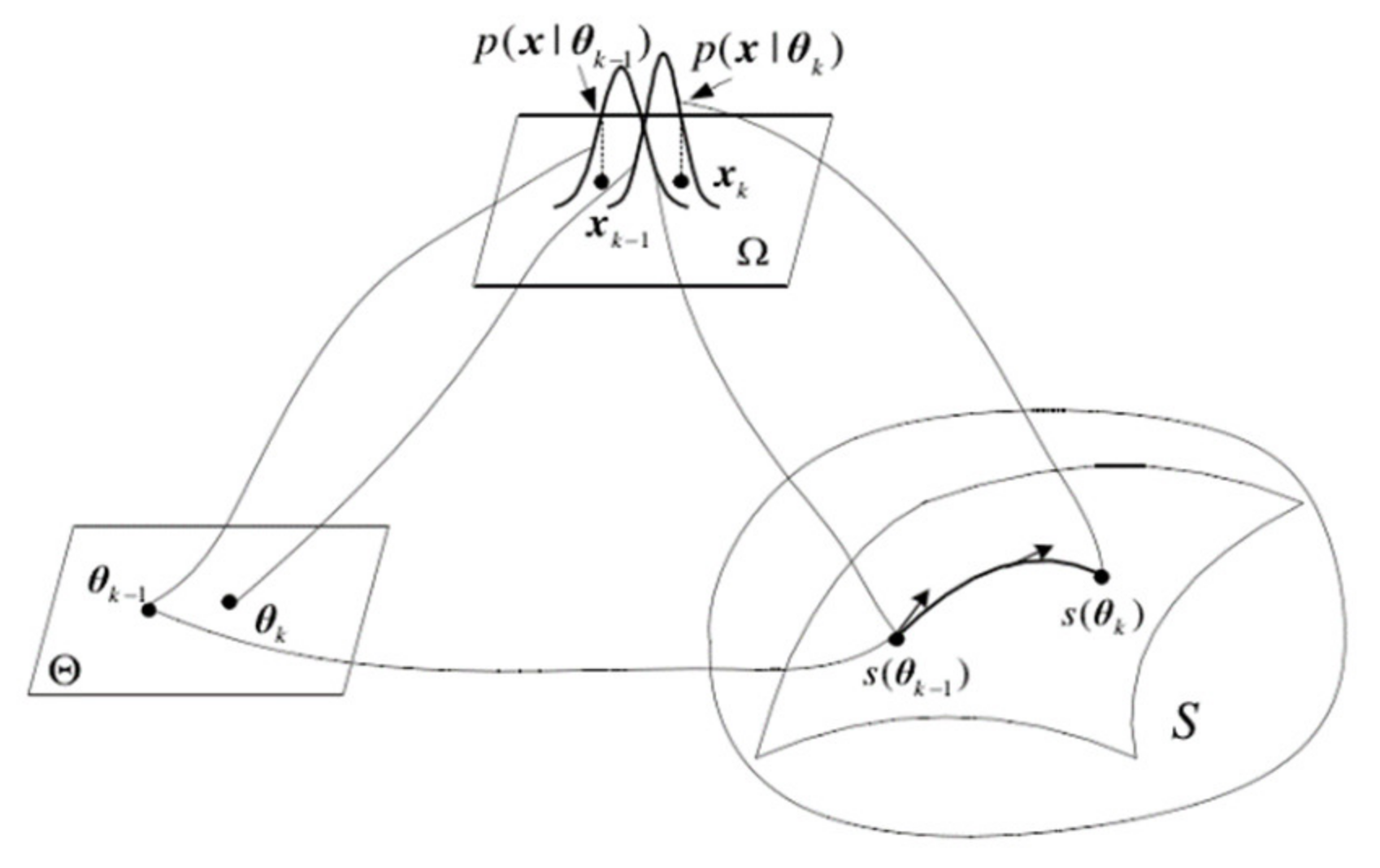

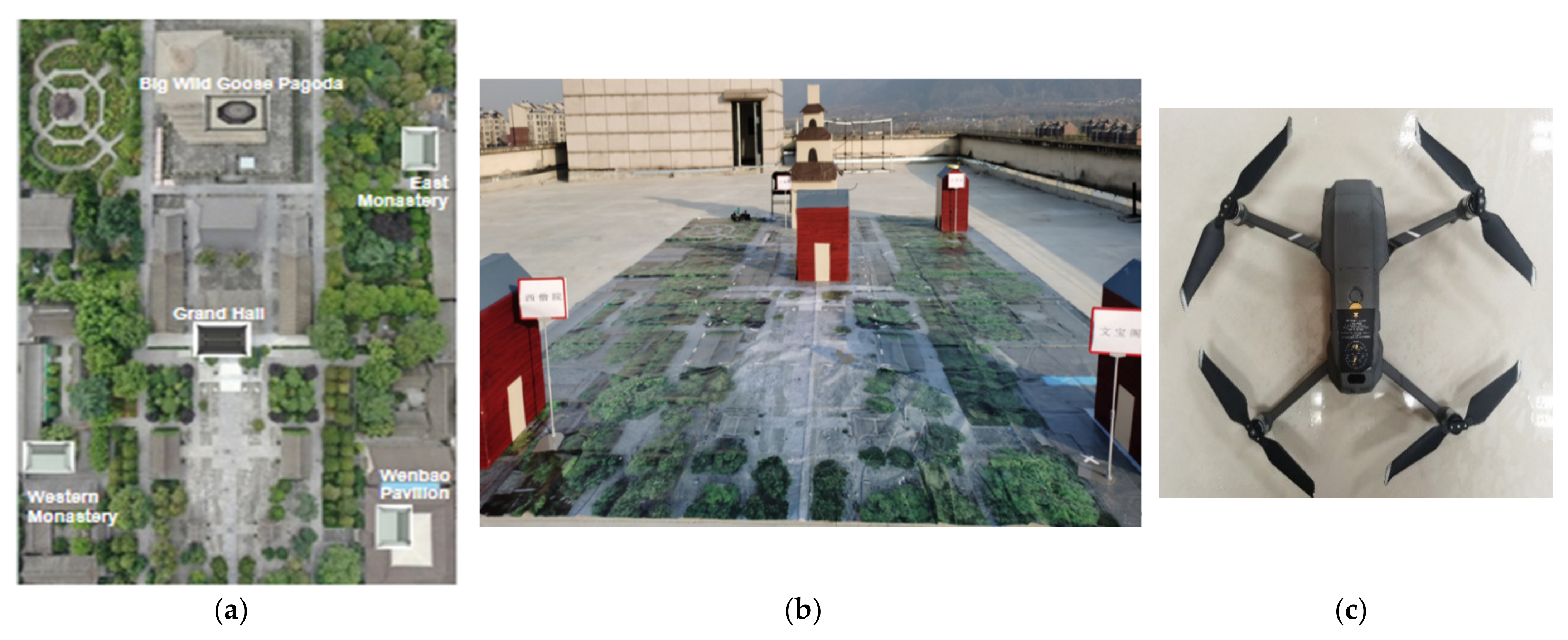
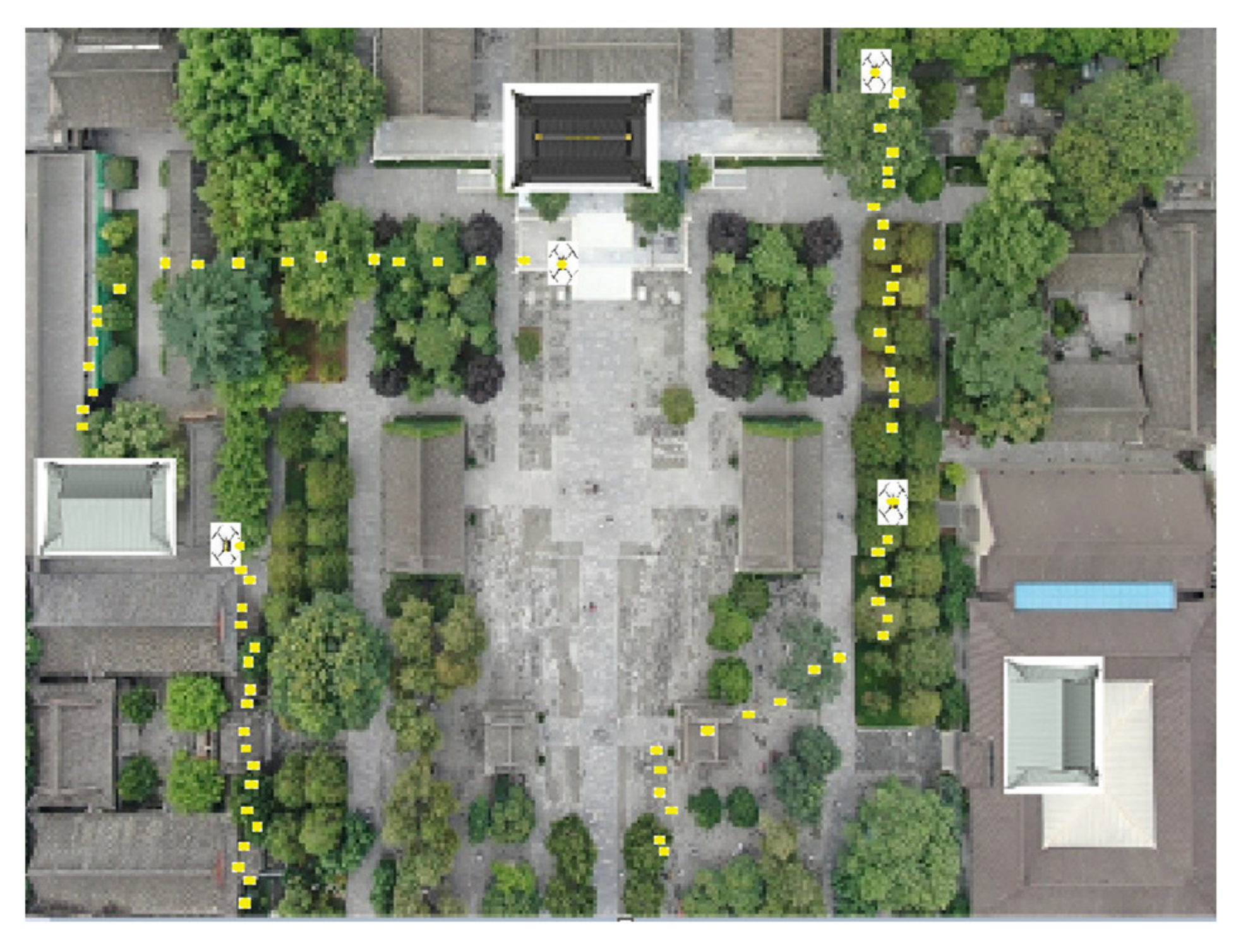
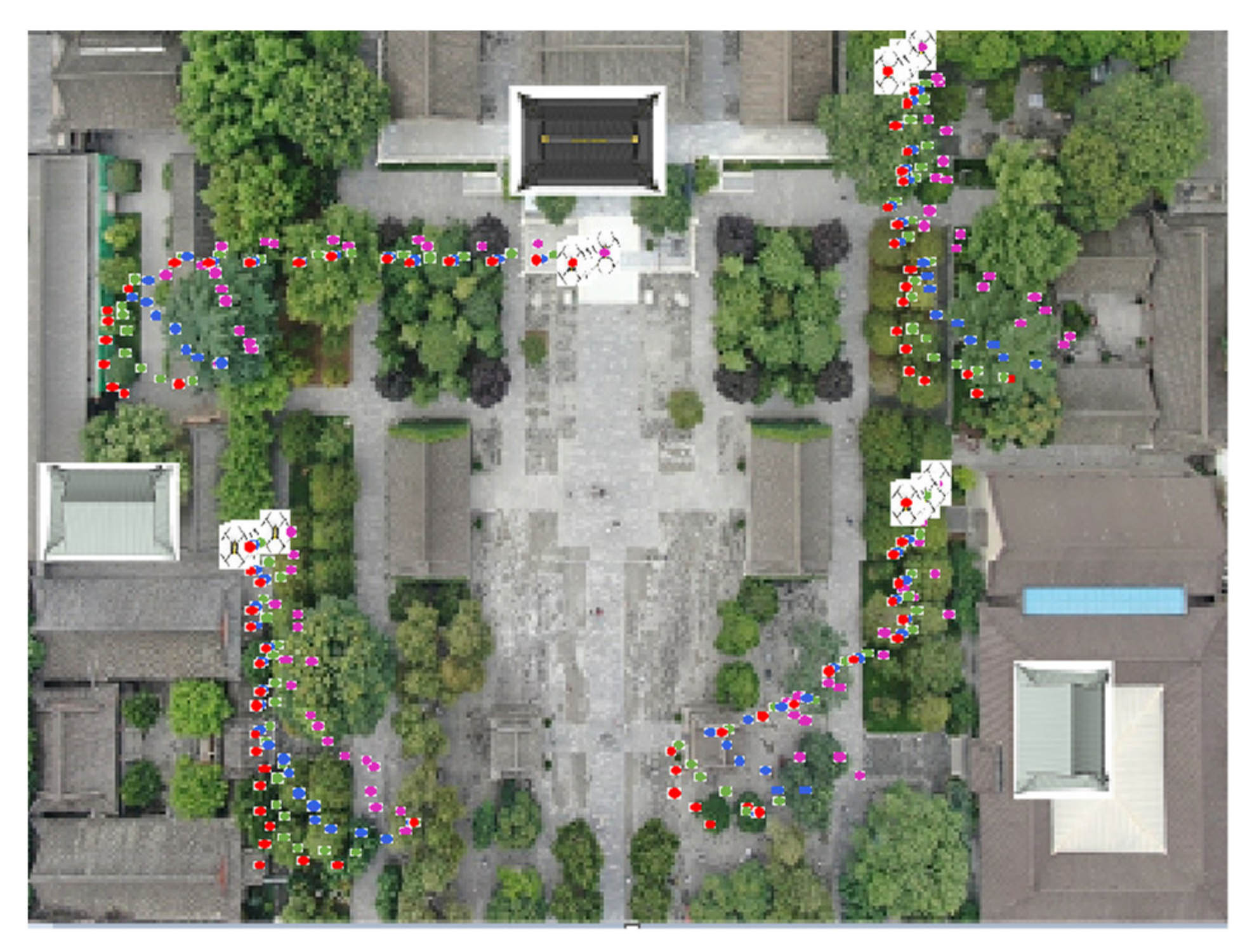
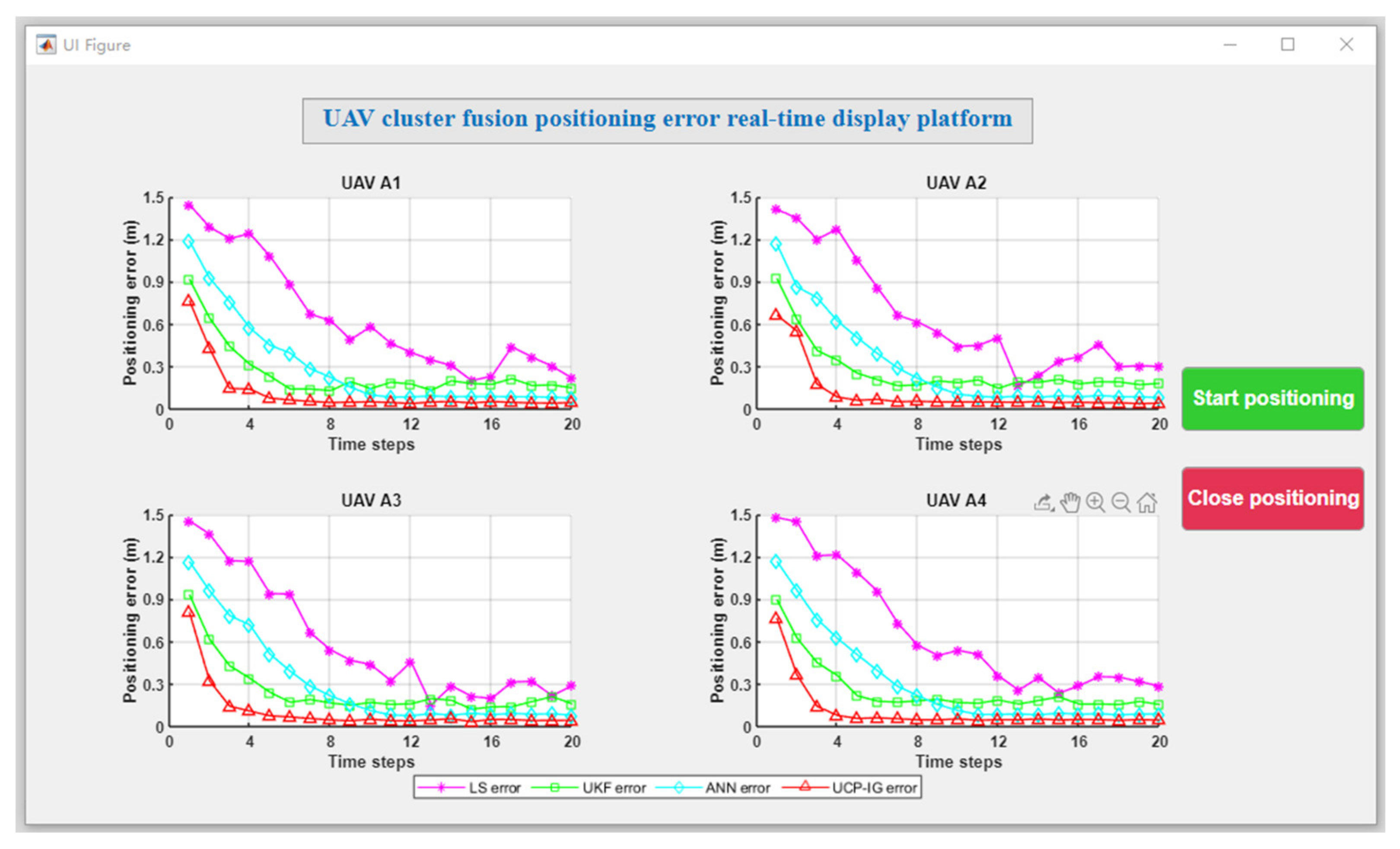
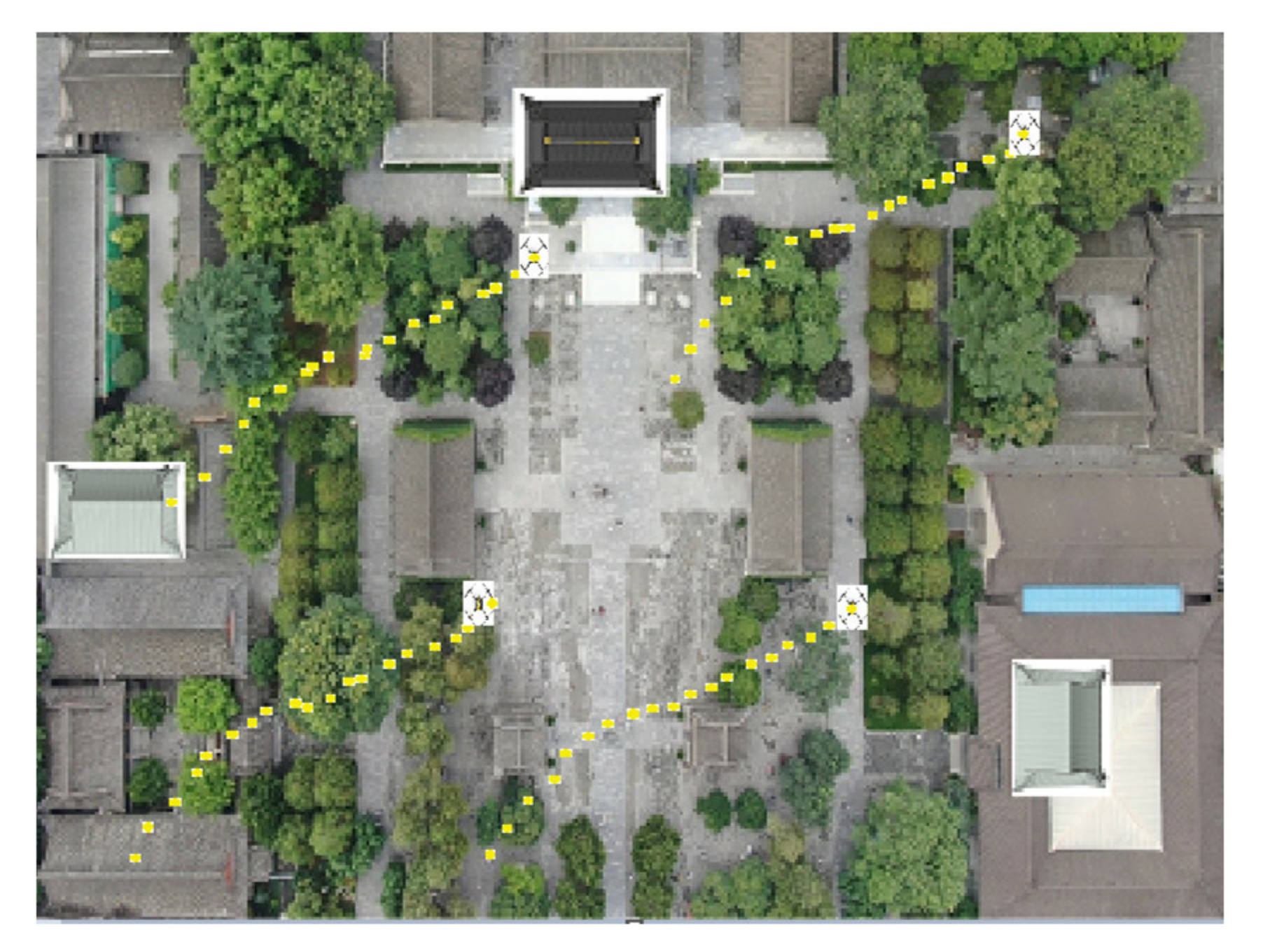

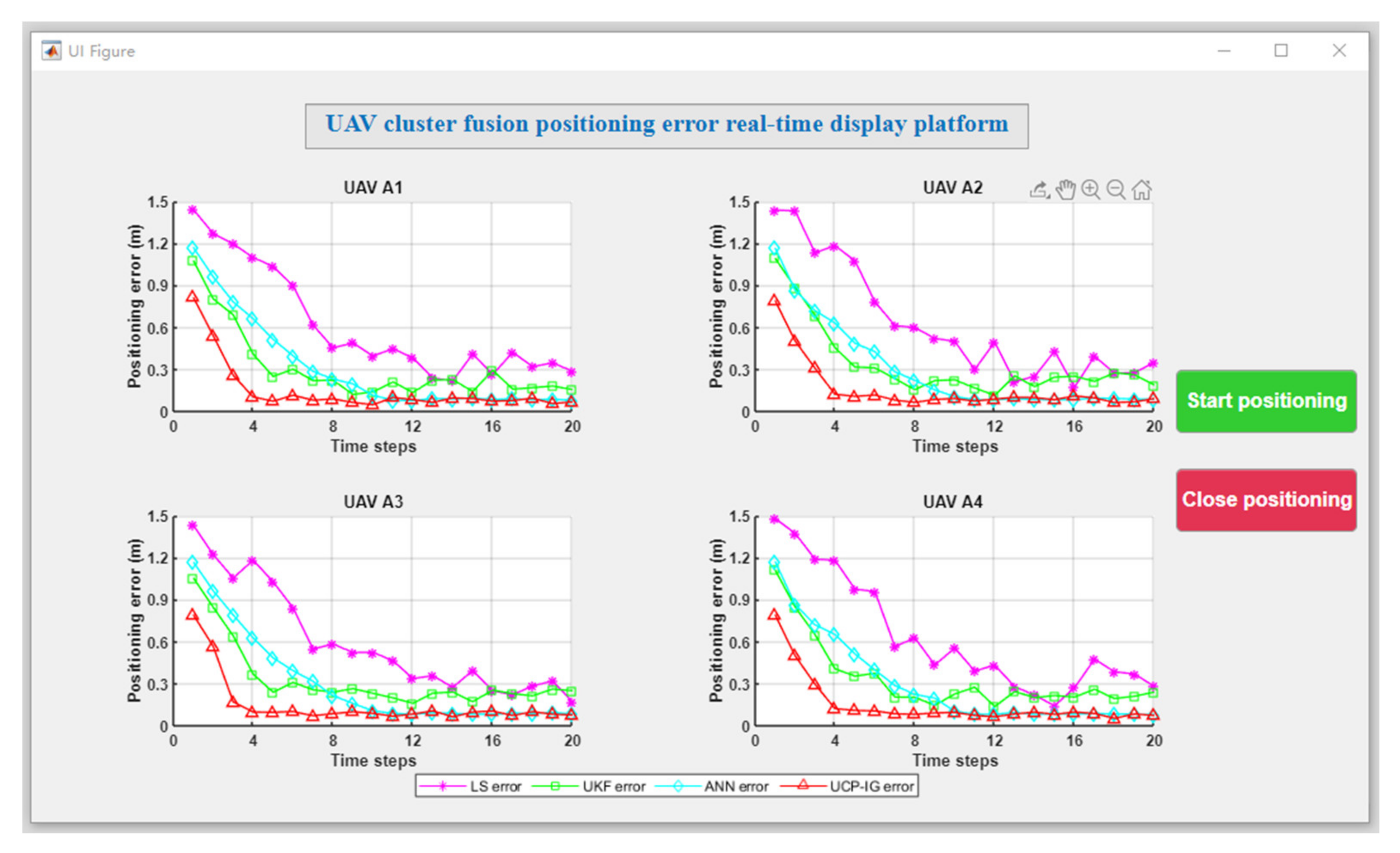
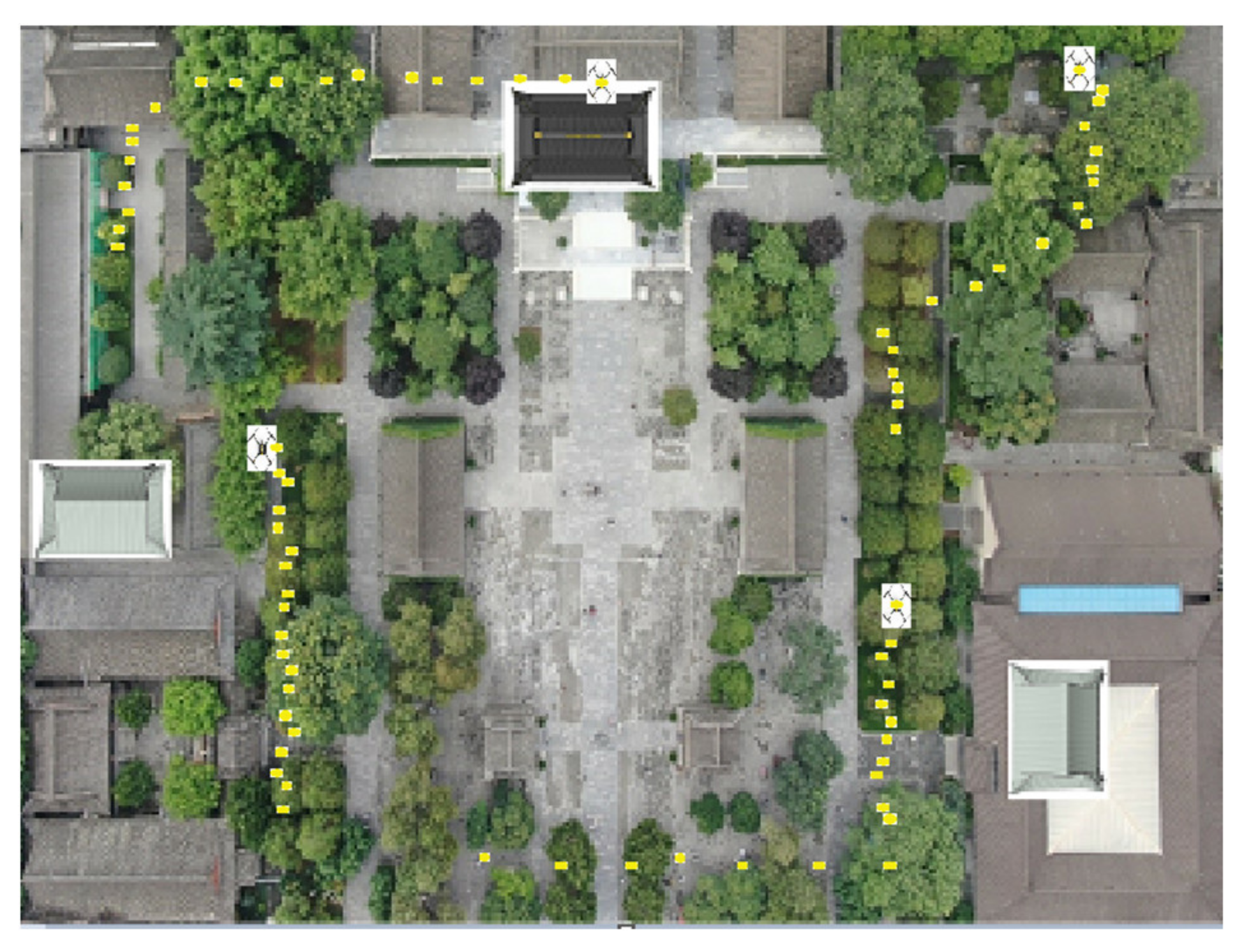
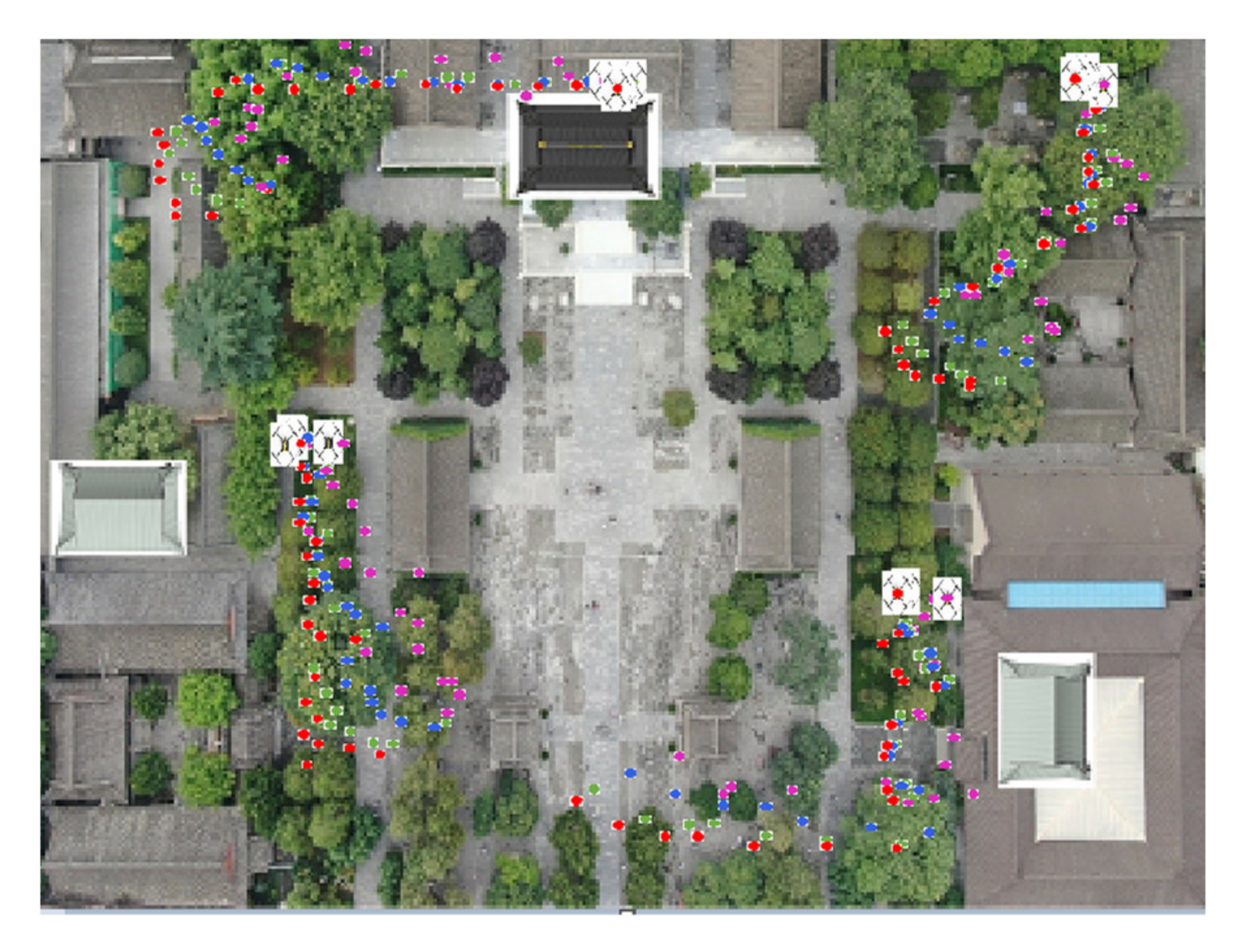
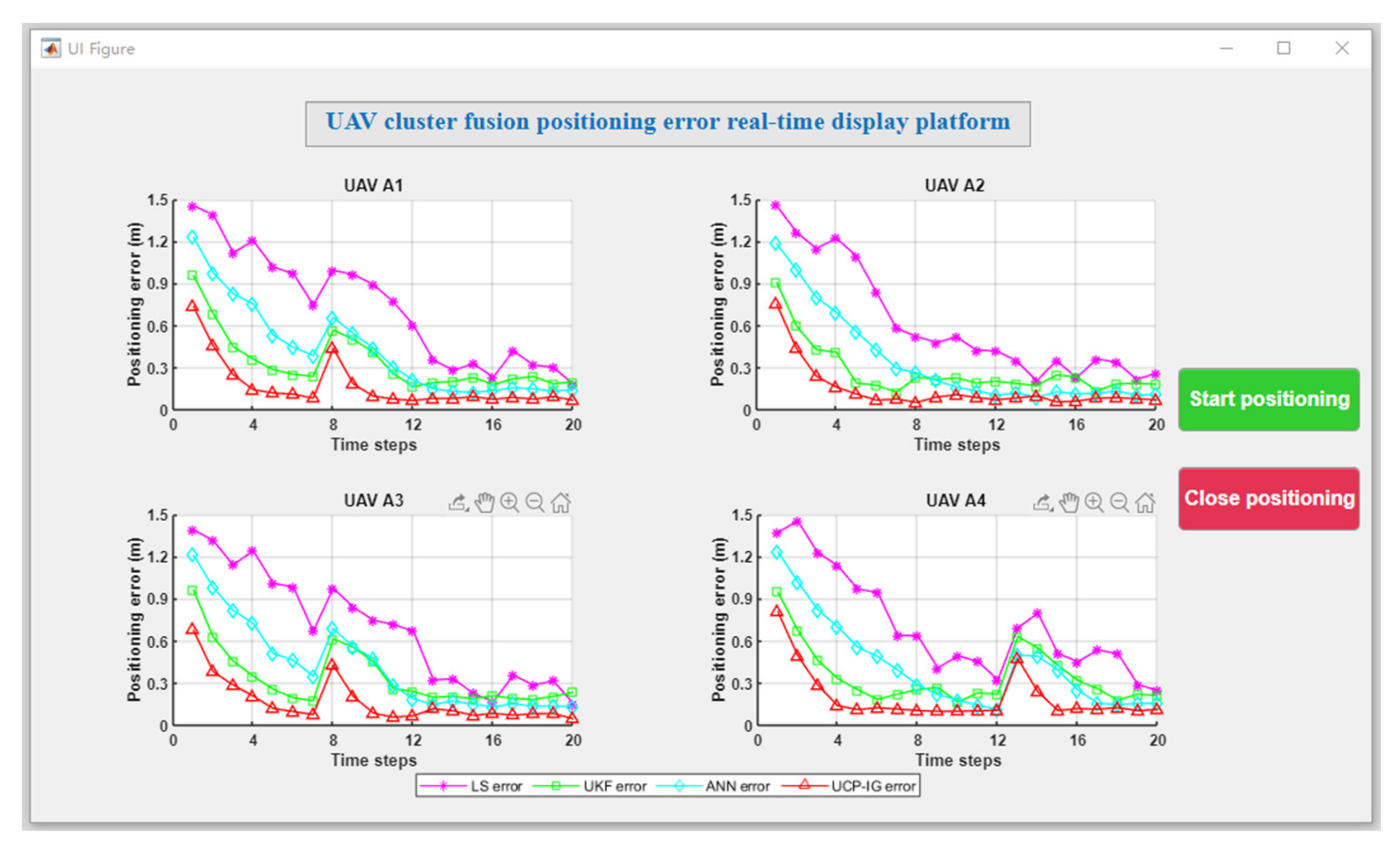
| Parameter | Value |
|---|---|
| Number of UAVs | 4 |
| Time | 20 s |
| Number of Monte Carlo simulations | 10,000 |
| Drone motion jitter error | 0.5 m |
| Satellite navigation ranging information error | 1.5 m |
| UAV Number | Time Steps | ||||
|---|---|---|---|---|---|
| 5 | 10 | 15 | 20 | ||
| UAV A1 | True height (m) | 1.05 | 2.05 | 3.04 | 4.06 |
| Location height of UCP-IG (m) | 1.09 | 2.08 | 3.06 | 4.08 | |
| UAV A2 | True height (m) | 1.10 | 2.07 | 3.03 | 4.07 |
| Location height of UCP-IG (m) | 1.14 | 2.11 | 3.05 | 4.09 | |
| UAV A3 | True height (m) | 1.01 | 2.04 | 3.05 | 4.05 |
| Location height of UCP-IG (m) | 1.05 | 2.07 | 3.08 | 4.08 | |
| UAV A4 | True height (m) | 1.03 | 2.05 | 3.09 | 4.08 |
| Location height of UCP-IG (m) | 1.06 | 2.08 | 3.11 | 4.11 | |
| UAV Number | Average Error (m) | |||
|---|---|---|---|---|
| LS | UKF | ANN | UCP-IG | |
| UAV A1 | 0.63 | 0.26 | 0.29 | 0.11 |
| UAV A2 | 0.62 | 0.26 | 0.30 | 0.10 |
| UAV A3 | 0.60 | 0.26 | 0.30 | 0.17 |
| UAV A4 | 0.62 | 0.25 | 0.30 | 0.10 |
| UAV Number | Time Steps | ||||
|---|---|---|---|---|---|
| 5 | 10 | 15 | 20 | ||
| UAV A1 | True height (m) | 1.57 | 3.05 | 4.56 | 6.07 |
| Location height of UCP-IG (m) | 1.61 | 3.10 | 4.60 | 6.11 | |
| UAV A2 | True height (m) | 1.55 | 3.04 | 4.55 | 6.02 |
| Location height of UCP-IG (m) | 1.59 | 3.10 | 4.57 | 6.05 | |
| UAV A3 | True height (m) | 1.59 | 3.00 | 4.52 | 6.05 |
| Location height of UCP-IG (m) | 1.64 | 3.03 | 4.56 | 6.09 | |
| UAV A4 | True height (m) | 1.51 | 3.01 | 4.55 | 6.04 |
| Location height of UCP-IG (m) | 1.55 | 3.04 | 4.59 | 6.07 | |
| UAV Number | Average Error (m) | |||
|---|---|---|---|---|
| LS | UKF | ANN | UCP-IG | |
| UAV A1 | 0.62 | 0.33 | 0.29 | 0.14 |
| UAV A2 | 0.60 | 0.32 | 0.29 | 0.13 |
| UAV A3 | 0.63 | 0.35 | 0.30 | 0.15 |
| UAV A4 | 0.65 | 0.33 | 0.29 | 0.15 |
| UAV Number | Time Steps | ||||
|---|---|---|---|---|---|
| 5 | 10 | 15 | 20 | ||
| UAV A1 | True height (m) | 1.05 | 2.06 | 3.04 | 4.06 |
| Location height of UCP-IG (m) | 1.14 | 2.13 | 3.09 | 4.14 | |
| UAV A2 | True height (m) | 1.10 | 2.07 | 3.04 | 4.07 |
| Location height of UCP-IG (m) | 1.15 | 2.12 | 3.09 | 4.10 | |
| UAV A3 | True height (m) | 1.01 | 2.04 | 3.05 | 4.05 |
| Location height of UCP-IG (m) | 1.10 | 2.10 | 3.09 | 4.12 | |
| UAV A4 | True height (m) | 1.03 | 2.05 | 3.09 | 4.08 |
| Location height of UCP-IG (m) | 1.07 | 2.09 | 3.14 | 4.13 | |
Publisher’s Note: MDPI stays neutral with regard to jurisdictional claims in published maps and institutional affiliations. |
© 2022 by the authors. Licensee MDPI, Basel, Switzerland. This article is an open access article distributed under the terms and conditions of the Creative Commons Attribution (CC BY) license (https://creativecommons.org/licenses/by/4.0/).
Share and Cite
Tang, C.; Wang, Y.; Zhang, L.; Zhang, Y.; Song, H. Multisource Fusion UAV Cluster Cooperative Positioning Using Information Geometry. Remote Sens. 2022, 14, 5491. https://doi.org/10.3390/rs14215491
Tang C, Wang Y, Zhang L, Zhang Y, Song H. Multisource Fusion UAV Cluster Cooperative Positioning Using Information Geometry. Remote Sensing. 2022; 14(21):5491. https://doi.org/10.3390/rs14215491
Chicago/Turabian StyleTang, Chengkai, Yuyang Wang, Lingling Zhang, Yi Zhang, and Houbing Song. 2022. "Multisource Fusion UAV Cluster Cooperative Positioning Using Information Geometry" Remote Sensing 14, no. 21: 5491. https://doi.org/10.3390/rs14215491
APA StyleTang, C., Wang, Y., Zhang, L., Zhang, Y., & Song, H. (2022). Multisource Fusion UAV Cluster Cooperative Positioning Using Information Geometry. Remote Sensing, 14(21), 5491. https://doi.org/10.3390/rs14215491






